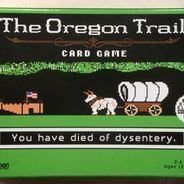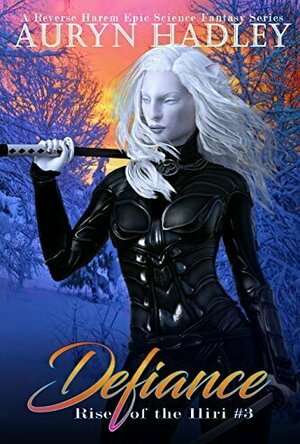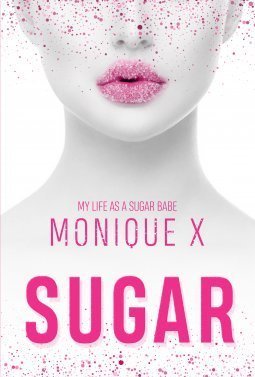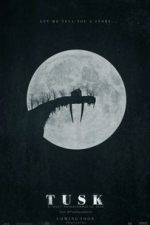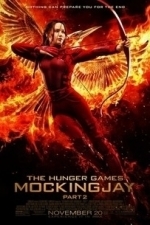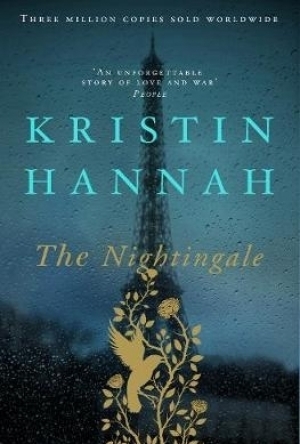Search
Search results

Blood Type Diet®
Health & Fitness and Medical
App
This is the only official Blood Type Diet® app released by Dr. Peter D’Adamo, international best...
Purple Phoenix Games (2266 KP) rated The Oregon Trail Card Game in Tabletop Games
Nov 7, 2019
The Oregon Trail! A classic computer game from our youth that, despite being so hard to beat, kept us coming back for more! So when it was turned into a card game, I was SO EXCITED! Nothing like dying of Dysentery to bring back fond memories! Does this game live up to the hype of the OG game? Keep reading to find out!
The Oregon Trail Card Game is a cooperative game of hand management in which players are trying to make it all the way down the Oregon Trail! Players take turns playing Trail cards to advance on their journey, stopping at forts and towns along the way to collect supplies, and dealing with the Calamities of the open Trail – whether that’s fording across rivers or dealing with nasty rattlesnake bites. Do you and your party have what it takes to survive, or will the trail claim more lives in the end?
Ok so first things first – for nostalgia’s sake, this game is great. The artwork is a call-back to the original 8-bit design, the Calamities you may encounter are taken right from the computer game (there IS a “You have died of Dysentery” card), and the game is as hard to win as you remember. It definitely makes for a fun walk down memory lane.
Now, actually PLAYING the game is a different story. I think it’s a pretty bad attempt at a card game. For starters, the rulesheet (it’s more of a brochure than a book…) is extremely ambiguous. I had more questions about how to play after I read the rules than I did beforehand. The physical layout of the rules feels choppy, which makes it hard to logically follow, and the wording for some rules feels like it contradicts other rules. Overall, it just seems like the rulesheet was written in one go with no refining or editing – every single thought was thrown in and then not checked for accuracy or clarity.
Beyond the calamity that is the rulesheet, the game is hard to beat. The rules even say “More likely, the game ends when the last player dies.” Like even the creators know it’s impossible! I’ve never won a game because it is stacked against the players from the start. For starters, the game is so long. Without going too much into detail, by the end of the game 50 out of the 58 trail cards will be used – that’s almost ALL of them! And almost every card has a text action/consequence associated with it, which really reduces your likelihood of success. Some Calamity cards kill off players with no chance for remedy first, while some Trail cards are dictated by die rolls that can also either kill you or cause you to draw extra Calamity cards. I know the original game was tough, but since this card game is more based on the luck of the draw than your decisions, it feels futile to play. Luck-based games, when executed well, can be pretty fun. But unfortunately, it just doesn’t work for me in this game.
So do I like this game? Kind of? I like it for nostalgic purposes, but beyond that I really don’t. The rules make no sense and I feel like I interpret them differently every time – so who knows if I’ve actually ever played correctly. I have never won a game, the furthest I’ve ever gotten has been about halfway through to the end. Should you try The Oregon Trail Card Game? Probably not. You’re not really missing a lot besides reliving some childhood memories. Fun idea, but awful execution, in my opinion! Purple Phoenix Games (with guest score from a pal of Travis) gives The Oregon a Trail Card Game a choleric 12 / 24.
The Oregon Trail Card Game is a cooperative game of hand management in which players are trying to make it all the way down the Oregon Trail! Players take turns playing Trail cards to advance on their journey, stopping at forts and towns along the way to collect supplies, and dealing with the Calamities of the open Trail – whether that’s fording across rivers or dealing with nasty rattlesnake bites. Do you and your party have what it takes to survive, or will the trail claim more lives in the end?
Ok so first things first – for nostalgia’s sake, this game is great. The artwork is a call-back to the original 8-bit design, the Calamities you may encounter are taken right from the computer game (there IS a “You have died of Dysentery” card), and the game is as hard to win as you remember. It definitely makes for a fun walk down memory lane.
Now, actually PLAYING the game is a different story. I think it’s a pretty bad attempt at a card game. For starters, the rulesheet (it’s more of a brochure than a book…) is extremely ambiguous. I had more questions about how to play after I read the rules than I did beforehand. The physical layout of the rules feels choppy, which makes it hard to logically follow, and the wording for some rules feels like it contradicts other rules. Overall, it just seems like the rulesheet was written in one go with no refining or editing – every single thought was thrown in and then not checked for accuracy or clarity.
Beyond the calamity that is the rulesheet, the game is hard to beat. The rules even say “More likely, the game ends when the last player dies.” Like even the creators know it’s impossible! I’ve never won a game because it is stacked against the players from the start. For starters, the game is so long. Without going too much into detail, by the end of the game 50 out of the 58 trail cards will be used – that’s almost ALL of them! And almost every card has a text action/consequence associated with it, which really reduces your likelihood of success. Some Calamity cards kill off players with no chance for remedy first, while some Trail cards are dictated by die rolls that can also either kill you or cause you to draw extra Calamity cards. I know the original game was tough, but since this card game is more based on the luck of the draw than your decisions, it feels futile to play. Luck-based games, when executed well, can be pretty fun. But unfortunately, it just doesn’t work for me in this game.
So do I like this game? Kind of? I like it for nostalgic purposes, but beyond that I really don’t. The rules make no sense and I feel like I interpret them differently every time – so who knows if I’ve actually ever played correctly. I have never won a game, the furthest I’ve ever gotten has been about halfway through to the end. Should you try The Oregon Trail Card Game? Probably not. You’re not really missing a lot besides reliving some childhood memories. Fun idea, but awful execution, in my opinion! Purple Phoenix Games (with guest score from a pal of Travis) gives The Oregon a Trail Card Game a choleric 12 / 24.
BankofMarquis (1832 KP) rated 8-BIT CHRISTMAS (2021) in Movies
Dec 12, 2021
Charming, Nostalgic and HeartWarming
If I told you that I just watched a charming Holiday movie where the Narrator reminisced about a Christmas of his youth - when he was 10 or 11 - and the Narrator desperately wanted a special present brought to him by Santa - but said item is strictly forbidden in his household, so the Narrator heads off on an adventure to get this item, you would think I was talking about the classic Holiday perennial A CHRISTMAS STORY - and you would be wrong.
I’m speaking about the HBO MAX Original Film 8-BIT CHRISTMAS starring Neil Patrick Harris as the Narrator of the story that reminisces about his life as a 10-11 year old around the Holidays in the late 1980’s.
And, darn it all, if it doesn’t work well (despite my indignation that all they are doing is ripping off A CHRISTMAS STORY) for there is enough nostalgia and heart to melt the emotions of even the most miserly of Ebenezer Scrooge’s this holiday season.
Written by Kevin Jakubowski (based off his book) and Directed by Michael Dowse (the underrated comedy STUBER), 8-Bit Christmas tells the tale of 11 year old Jake Doyle who wants nothing more in this world than to receive the mother of all Christmas presents - a Nintendo 8 Bit system. Along with a “Goonies” collection of friends, Jake sets off to find this hard to find item - and convince his parents to get it for him for Christmas.
In the hands of young actor Winslow Fegley (Disney’s TIMMY FAILURE), young Jake is a pleasant enough protagonist to head off on this journey with. His ragtag group of friends are a group of generic nerds that pretty much check-off the “nerd friend group” list (and this is meant as a compliment). We spend quite a bit of time with these kids and they are a good enough group of kids to spend time with.
This film does hit a few of the same notes as A CHRISTMAS STORY, there is an obsessed, seemingly out of touch Dad, this time played by Steve Zahn (RESCUE DAWN) in a heart-warming portrayal and the coupon-cutting, cost saving Mom played by June Diane Raphael (FORGETTING SARAH MARSHALL) who is putting up with it all. This film even has a younger sibling, this time a sister Lizzy, who wants her own elusive gift - a Cabbage Patch kid.
A highlight for me was the performance of Kathy Greenwood as the teacher with the constant sniffles. I know many a teacher and they almost ALWAYS have colds given to them from their charges.
This film is a fine post card of Chicago in the late 1980s and skewers (and honors) the pop-fads of the time (complete with fashion and styling) and is an entertaining enough 2 hour escape during the Holidays.
Oh, and did I mention that at one point in this film, I had to dab at my eyes with a tissue? Yes, despite my skepticism, this film managed to touch my heart even though I fought like crazy to deny that.
If you’re looking for a fun family entertainment this Holiday season, 8-BIT CHRISTMAS can fill the bill nicely.
Letter Grade: B+
7 stars (out of 10) and you can take that to the Bank(ofMarquis)
I’m speaking about the HBO MAX Original Film 8-BIT CHRISTMAS starring Neil Patrick Harris as the Narrator of the story that reminisces about his life as a 10-11 year old around the Holidays in the late 1980’s.
And, darn it all, if it doesn’t work well (despite my indignation that all they are doing is ripping off A CHRISTMAS STORY) for there is enough nostalgia and heart to melt the emotions of even the most miserly of Ebenezer Scrooge’s this holiday season.
Written by Kevin Jakubowski (based off his book) and Directed by Michael Dowse (the underrated comedy STUBER), 8-Bit Christmas tells the tale of 11 year old Jake Doyle who wants nothing more in this world than to receive the mother of all Christmas presents - a Nintendo 8 Bit system. Along with a “Goonies” collection of friends, Jake sets off to find this hard to find item - and convince his parents to get it for him for Christmas.
In the hands of young actor Winslow Fegley (Disney’s TIMMY FAILURE), young Jake is a pleasant enough protagonist to head off on this journey with. His ragtag group of friends are a group of generic nerds that pretty much check-off the “nerd friend group” list (and this is meant as a compliment). We spend quite a bit of time with these kids and they are a good enough group of kids to spend time with.
This film does hit a few of the same notes as A CHRISTMAS STORY, there is an obsessed, seemingly out of touch Dad, this time played by Steve Zahn (RESCUE DAWN) in a heart-warming portrayal and the coupon-cutting, cost saving Mom played by June Diane Raphael (FORGETTING SARAH MARSHALL) who is putting up with it all. This film even has a younger sibling, this time a sister Lizzy, who wants her own elusive gift - a Cabbage Patch kid.
A highlight for me was the performance of Kathy Greenwood as the teacher with the constant sniffles. I know many a teacher and they almost ALWAYS have colds given to them from their charges.
This film is a fine post card of Chicago in the late 1980s and skewers (and honors) the pop-fads of the time (complete with fashion and styling) and is an entertaining enough 2 hour escape during the Holidays.
Oh, and did I mention that at one point in this film, I had to dab at my eyes with a tissue? Yes, despite my skepticism, this film managed to touch my heart even though I fought like crazy to deny that.
If you’re looking for a fun family entertainment this Holiday season, 8-BIT CHRISTMAS can fill the bill nicely.
Letter Grade: B+
7 stars (out of 10) and you can take that to the Bank(ofMarquis)

Active Training: A Handbook of Techniques, Designs, Case Examples and Tips
Melvin L. Silberman and Elaine Biech
Book
The all-time bestselling training handbook, updated for new technologies and roles Active Training...
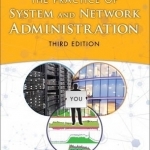
The Practice of System and Network Administration: Volume 1: Devops and Other Best Practices for Enterprise it
Strata R. Chalup, Thomas A. Limoncelli and Christina J. Hogan
Book
With 28 new chapters, the third edition of The Practice of System and Network Administration...
Lyndsey Gollogly (2893 KP) rated Defiance (Rise of the Iliri #3) in Books
Mar 3, 2020
Contains spoilers, click to show
HER ONLY CHOICE IS TO CHANGE HER WORLD…
Salryc Luxx has come a long way in just four years, from slave to conscript, to elite Black Blade assassin, rising rapidly as her extraordinary abilities are revealed. Promoted to lieutenant after capturing a valuable shipment of metals and laying waste to the invading force, she and Cyno, her partner (in war and love), have been entrusted with a dangerous mission: to assassinate the King of Anglia and the five nobles in line for the throne, leaving the path to ascension clear for their own leader.
That’s one side of the story. The other is that she and Cyno have been assigned this suicide mission as Parliament’s first pass at removing the iliri taint from the military. Either way, without the strength of allies, the Conglomerate of Free Citizens cannot turn back the invaders, whose goal is to wipe out the whole iliri species, so Sal and Cyno are the only hope of ending the continental war devastating their species. Traveling for months, they are so far away from their home base that they’re beyond the mental link that connects the pack. They remain committed to their mission—and to each other, but… unhappily disturbed. They can only hope their separation from the pack bring them closer together. But the danger is, in the absence of the pack, their bond will wither.
A kind deed, helping what they take to be a wounded animal, leads to the discovery of their true nature, to strengthening and re-energizing their pack, and to a surprising alliance that offers hope for the future. The wounded animal, they learn, is a graour wolf, a species of ferocious warriors with language and traits nearly identical to iliri. When two of them ask to join her pack, Sal recruits them as Black Blades and the iliri are no longer the only dog in the fight for iliri freedom.
But Anglia is nothing like the Conglomerate of Free Citizens. Anglians discriminate based on gender, not species. Iliri are thought to be just a myth--until Sal shows her face. To convince the king and his council that yes, a woman really can be a soldier, she's going to have to make her own rules. The enemy is moving. She doesn't have time to deal with outdated court manners.
As the defiance of an entire species rises up in her, she really has no choice—she’ll just have to change the world.
Women readers will thrill to the reverse harem idea that pushes the boundaries of epic fantasy in this second world series that may remind some of Avatar without the scary beasts; or even Game Of Thrones, but happier, with more color—and a dazzling female protagonist. Fans of Anne McCaffrey’s Dragonriders of Pern will find Sal’s planet Ogun a thrilling destination for their next fantasy fix
They just keep getting better! Sal and Cyno are out on their own and they are kicking up a storm! We get to meet the Graour who the Iliri are descended from! We get a chance to see a whole new world building. I love the new characters and you are with them every step of the way on the battlefield it's also such a good feeling when the black blades are all back together and loving their new pack mates. It was only a matter of time before Cyno became her number 1 I'm glad Blaec took it well. Looking forward to book 4!
Salryc Luxx has come a long way in just four years, from slave to conscript, to elite Black Blade assassin, rising rapidly as her extraordinary abilities are revealed. Promoted to lieutenant after capturing a valuable shipment of metals and laying waste to the invading force, she and Cyno, her partner (in war and love), have been entrusted with a dangerous mission: to assassinate the King of Anglia and the five nobles in line for the throne, leaving the path to ascension clear for their own leader.
That’s one side of the story. The other is that she and Cyno have been assigned this suicide mission as Parliament’s first pass at removing the iliri taint from the military. Either way, without the strength of allies, the Conglomerate of Free Citizens cannot turn back the invaders, whose goal is to wipe out the whole iliri species, so Sal and Cyno are the only hope of ending the continental war devastating their species. Traveling for months, they are so far away from their home base that they’re beyond the mental link that connects the pack. They remain committed to their mission—and to each other, but… unhappily disturbed. They can only hope their separation from the pack bring them closer together. But the danger is, in the absence of the pack, their bond will wither.
A kind deed, helping what they take to be a wounded animal, leads to the discovery of their true nature, to strengthening and re-energizing their pack, and to a surprising alliance that offers hope for the future. The wounded animal, they learn, is a graour wolf, a species of ferocious warriors with language and traits nearly identical to iliri. When two of them ask to join her pack, Sal recruits them as Black Blades and the iliri are no longer the only dog in the fight for iliri freedom.
But Anglia is nothing like the Conglomerate of Free Citizens. Anglians discriminate based on gender, not species. Iliri are thought to be just a myth--until Sal shows her face. To convince the king and his council that yes, a woman really can be a soldier, she's going to have to make her own rules. The enemy is moving. She doesn't have time to deal with outdated court manners.
As the defiance of an entire species rises up in her, she really has no choice—she’ll just have to change the world.
Women readers will thrill to the reverse harem idea that pushes the boundaries of epic fantasy in this second world series that may remind some of Avatar without the scary beasts; or even Game Of Thrones, but happier, with more color—and a dazzling female protagonist. Fans of Anne McCaffrey’s Dragonriders of Pern will find Sal’s planet Ogun a thrilling destination for their next fantasy fix
They just keep getting better! Sal and Cyno are out on their own and they are kicking up a storm! We get to meet the Graour who the Iliri are descended from! We get a chance to see a whole new world building. I love the new characters and you are with them every step of the way on the battlefield it's also such a good feeling when the black blades are all back together and loving their new pack mates. It was only a matter of time before Cyno became her number 1 I'm glad Blaec took it well. Looking forward to book 4!
Midge (525 KP) rated Sugar: My Life as a Sugar Babe in Books
Dec 11, 2018
A fun, fast and interesting read. (2 more)
Fascinating to read about Monique's travels to different countries.
Intense and emotional
Very Steamy!
Sugar was beckoning at me to be read, initially by the eye-catching and attractive cover and that it looked like it would be a very steamy read, as indeed it was. I was definitely not disappointed! I was smitten from the very first, right until the last page.
Monique is a loving single mother, who is trying to create a happy home for her two daughters and she's also a Sugar Babe, dating wealthy men, a practice known as Sugar Daddy dating. She mostly meets her Sugar Daddies during the day, when the children are at school or when they are with their father. Monique finds a thousand pounds in her purse after one night of passionate and very hot sex, and she realises that Sugar Daddy dating could be her way to survive as a single mother.
A heady life of wealthy men, luxury hotels and glamorous experiences ensue. One of my favourites was Iranian engineer Farshad, who liked to lavish Monique with gifts such as expensive jewellery and leather boots and wine and dine her in exotic restaurants.
Dates with Sugar Daddies see her flying to Paris, Barcelona, Vienna, Milan, Japan, Singapore and Hong Kong and skydiving in Dubai. Thanks to her Sugar Daddies, Monique can provide for her children, she has some independence, and experiences a whole new range of sexual fantasies.
She deactivates her account with her agency, Seeking Arrangement, and her ex-husband stops paying for the children's' upkeep. She is then prepared to do anything for the sake of her children. Money becomes her top priority and she starts living in the dangerous waters of the escort world. Now she realises that she must find a way out before this hollow existence becomes a habit.
I absolutely loved reading Sugar. Maybe it was the novelty of reading a book told as memoirs and based on true events. It was fascinating to read about Monique's travels to different countries and about the different nationalities, cultures and personalities of the gentlemen she dated. However, she ends up working as an escort rather than a Sugar Babe, as it's all about basic survival instincts, money and very spicy sex.
Sugar is steamy and hot, passionate and caring, intense and emotional and there are definitely moments where you will laugh. It is such a fun, fast and interesting read.
Monique X is a brilliant storyteller and really draws you in with her descriptiveness.
Thanks to NetGalley and Thistle Publishing for my ARC.
Monique is a loving single mother, who is trying to create a happy home for her two daughters and she's also a Sugar Babe, dating wealthy men, a practice known as Sugar Daddy dating. She mostly meets her Sugar Daddies during the day, when the children are at school or when they are with their father. Monique finds a thousand pounds in her purse after one night of passionate and very hot sex, and she realises that Sugar Daddy dating could be her way to survive as a single mother.
A heady life of wealthy men, luxury hotels and glamorous experiences ensue. One of my favourites was Iranian engineer Farshad, who liked to lavish Monique with gifts such as expensive jewellery and leather boots and wine and dine her in exotic restaurants.
Dates with Sugar Daddies see her flying to Paris, Barcelona, Vienna, Milan, Japan, Singapore and Hong Kong and skydiving in Dubai. Thanks to her Sugar Daddies, Monique can provide for her children, she has some independence, and experiences a whole new range of sexual fantasies.
She deactivates her account with her agency, Seeking Arrangement, and her ex-husband stops paying for the children's' upkeep. She is then prepared to do anything for the sake of her children. Money becomes her top priority and she starts living in the dangerous waters of the escort world. Now she realises that she must find a way out before this hollow existence becomes a habit.
I absolutely loved reading Sugar. Maybe it was the novelty of reading a book told as memoirs and based on true events. It was fascinating to read about Monique's travels to different countries and about the different nationalities, cultures and personalities of the gentlemen she dated. However, she ends up working as an escort rather than a Sugar Babe, as it's all about basic survival instincts, money and very spicy sex.
Sugar is steamy and hot, passionate and caring, intense and emotional and there are definitely moments where you will laugh. It is such a fun, fast and interesting read.
Monique X is a brilliant storyteller and really draws you in with her descriptiveness.
Thanks to NetGalley and Thistle Publishing for my ARC.
Gareth von Kallenbach (980 KP) rated Tusk (2014) in Movies
Jun 19, 2019
To legions of his many fans, writer, director, producer, and podcaster Kevin Smith is a man fanboys find easy to root for. His films have become pop-culture gold to comic book, science fiction, and general geekdom fans the world over. Smith has built a career on independent films with characters that are as real as they are raw and raunchy. The crude nature of his jokes often put him in a “love them or hate them” category for many critics as it is definitely not a style that is for the masses. That being said, the films are witty, honest, and most times relatable, no matter how bad the situations and the characters become. Recently, Smith took a detour to the darker side with his film “Red State” that looked at a group of kids who became the victims of a fanatical cult leader and his followers.
While Smith was reportedly working to get funding for “Clerks 3”, an idea was presented to him during his Smodcast about a guy in rural Canada who is offering free room and board to anybody who would live with him on the condition that they wear a walrus costume from time to time. Buoyed by his followers on Twitter, Smith decided to make a horror film based on the situation even after learning that the incident in question was the result of a prank by a comedian.
In his new film Tusk, we are introduced to a successful podcaster named Wallace (Justin Long), who along with his costar Teddy (Haley Joel Osment), run a show called the Not See Party, whose name leads to several double takes and comical and uncomfortable situations down the line. Wallace’s girlfriend Ally (Genesis Rodriguez) wishes to accompany Wallace to his trip up to Canada in order to interview someone for a show.
Since Teddy is not a flyer, Wallace travels to locations to interview people and then in turn tells the stories to Teddy so the two can comment about them on air. Ally longs for the Wallace of old who was a struggling comedian as she believes that the successful Wallace is not that fun to be around as he no longer makes her a priority in life. Wallace admits as much when he discloses a series of infidelities to Teddy and dismisses them as nothing more than clearing of the head while traveling or before doing a live show for an audience.
Upon arriving in Manitoba, Wallace learns that his intended interview has befallen tragedy and faced without a topic for his next show, Wallace is intrigued by a flyer from a man offering room and board as well as plenty of stories.
Wallace makes contact with the individual and travels two hours into rural Manitoba at night to meet the man at his expansive estate. Upon meeting Howard Howe (Michael Parks), Wallace is captivated by the elderly wheelchair-bound gentleman and his tales of life at sea including meeting Ernest Hemingway during the war. As Wallace sat spellbound by the tales Howard is telling him, he soon falls unconscious as a result of being drugged by his host. Things take a very dark turn the following morning when Howard learns that he has lost a leg of which Howard proclaims was the tragic result of a spider bite. Things become a living nightmare as Wallace quickly learns just how devious and diabolical Michael’s plans are for him and trapped in a remote area his humanity and faith are slowly stripped away by the situation he finds himself in.
Teddy and Ally travel to Manitoba due to a frantic call Wallace makes and not finding much assistance from the local authorities, turn to quirky and eccentric former homicide detective Guy LaPointe (Johnny Depp), who fears that Wallace has become the victim of an elusive killer whom LaPointe has been trying to find for years.
What follows is a dark, disturbing, and utterly captivating thriller in a race against time with the very essence and humanity of Wallace hanging in the balance.
While Smith inserts his trademark humor into the film, this is very much a psychological thriller and not a comedy. Depp does a fantastic job and is almost unrecognizable in his role as a homicide detective who is scheduled to appear in a subsequent film currently shooting. While it seemed a bit of a stretch that Ally would want be involved with Wallace, there was nonetheless a good bit of chemistry between them even though the majority of their scenes are shown via flashback.
Long and Parks propel the story as it is pretty much about the dramatic struggle between the two of them. Parks is captivating and creepy while the brash Wallace gets a lesson in humanity and what truly matters in life. While some will no doubt find the subject matter highly disturbing and may be quick to dismiss the film, this is one of the more clever and enjoyable thrillers in recent years and proves that Smith is a filmmaker capable of doing things other than his trademark comedies and should be encouraged to continue to broaden his horizons.
As it stands the film should delight fans of Smith but also allows him to expand his audience into new areas as this truly is one of the more memorable and entertaining films of the year.
http://sknr.net/2014/09/19/tusk/
While Smith was reportedly working to get funding for “Clerks 3”, an idea was presented to him during his Smodcast about a guy in rural Canada who is offering free room and board to anybody who would live with him on the condition that they wear a walrus costume from time to time. Buoyed by his followers on Twitter, Smith decided to make a horror film based on the situation even after learning that the incident in question was the result of a prank by a comedian.
In his new film Tusk, we are introduced to a successful podcaster named Wallace (Justin Long), who along with his costar Teddy (Haley Joel Osment), run a show called the Not See Party, whose name leads to several double takes and comical and uncomfortable situations down the line. Wallace’s girlfriend Ally (Genesis Rodriguez) wishes to accompany Wallace to his trip up to Canada in order to interview someone for a show.
Since Teddy is not a flyer, Wallace travels to locations to interview people and then in turn tells the stories to Teddy so the two can comment about them on air. Ally longs for the Wallace of old who was a struggling comedian as she believes that the successful Wallace is not that fun to be around as he no longer makes her a priority in life. Wallace admits as much when he discloses a series of infidelities to Teddy and dismisses them as nothing more than clearing of the head while traveling or before doing a live show for an audience.
Upon arriving in Manitoba, Wallace learns that his intended interview has befallen tragedy and faced without a topic for his next show, Wallace is intrigued by a flyer from a man offering room and board as well as plenty of stories.
Wallace makes contact with the individual and travels two hours into rural Manitoba at night to meet the man at his expansive estate. Upon meeting Howard Howe (Michael Parks), Wallace is captivated by the elderly wheelchair-bound gentleman and his tales of life at sea including meeting Ernest Hemingway during the war. As Wallace sat spellbound by the tales Howard is telling him, he soon falls unconscious as a result of being drugged by his host. Things take a very dark turn the following morning when Howard learns that he has lost a leg of which Howard proclaims was the tragic result of a spider bite. Things become a living nightmare as Wallace quickly learns just how devious and diabolical Michael’s plans are for him and trapped in a remote area his humanity and faith are slowly stripped away by the situation he finds himself in.
Teddy and Ally travel to Manitoba due to a frantic call Wallace makes and not finding much assistance from the local authorities, turn to quirky and eccentric former homicide detective Guy LaPointe (Johnny Depp), who fears that Wallace has become the victim of an elusive killer whom LaPointe has been trying to find for years.
What follows is a dark, disturbing, and utterly captivating thriller in a race against time with the very essence and humanity of Wallace hanging in the balance.
While Smith inserts his trademark humor into the film, this is very much a psychological thriller and not a comedy. Depp does a fantastic job and is almost unrecognizable in his role as a homicide detective who is scheduled to appear in a subsequent film currently shooting. While it seemed a bit of a stretch that Ally would want be involved with Wallace, there was nonetheless a good bit of chemistry between them even though the majority of their scenes are shown via flashback.
Long and Parks propel the story as it is pretty much about the dramatic struggle between the two of them. Parks is captivating and creepy while the brash Wallace gets a lesson in humanity and what truly matters in life. While some will no doubt find the subject matter highly disturbing and may be quick to dismiss the film, this is one of the more clever and enjoyable thrillers in recent years and proves that Smith is a filmmaker capable of doing things other than his trademark comedies and should be encouraged to continue to broaden his horizons.
As it stands the film should delight fans of Smith but also allows him to expand his audience into new areas as this truly is one of the more memorable and entertaining films of the year.
http://sknr.net/2014/09/19/tusk/
Gareth von Kallenbach (980 KP) rated The Hunger Games: Mockingjay - Part 2 (2015) in Movies
Jun 19, 2019
All good things must come to an end and with the fourth and final film based on Suzanne Collin’s widely popular Hunger Games series, audience get a chance to say goodbye to their favorite characters.
Literally picking up mid-scene, “The Hunger Games: Mockingjay Part 2” features Katniss (Jennifer Lawrence), dealing with the vicious attack from Peeta (Josh Hutcherson), after having his mind scrambled by the evil minions of President Snow (Donald Sutherland).
Despite the desires of District 13 President Coin (Julianne Moore), for Katniss to stay behind the lines following a harrowing incident during a visit to the Districts, Katniss is determined to kill Snow, and sets off with a dream team who is actually working behind the lines to film propaganda videos.
Naturally things are not as safe as they seem and before long, Katniss and her team are not only dealing with the dangers of the Capitol, but with an unknown element in the form of Peeta who was assigned to accompany them mid mission.
Politics soon appear to be as big a danger to Katniss to the traps and deadly creations that Snow has devised for her, but undaunted, Katniss and her crew must face the dangers to restore freedom to the people.
The film follows the book well in the second half of the film but it does suffer from pacing and editing issues. The film takes a while to get to the action and then takes a rest and conversation route for the characters. This is followed later in the film which undermines a sense of urgency for the characters. What made the earlier films such a success was the social commentary and horrific fascination of great splendor while those around them suffer and starve to toil away to provide creature comforts to the elite class. There was also the fact that the children of the oppressed were forced to battle to the death for the entertainment of the wealthy as well.
This element is lacking from this film, as it is in many ways a road trip of sorts with a couple of action scenes tossed in. Lawrence does well with what she has but she is essentially like most of the cast forced to play out the string save for some powerful but all too fleeting moments. Hutcherson shines as Peeta as you can see his torment as he strives to recover the personality and memories that are his and not fabrications, as well as his constant turmoil.
In the end the film unfolds not In a grand spectacle but rather pedestrian which while in keeping with the book, does seem disappointing compared to how good the series has been to date.
The film will satisfy fans but it does not hold your attention and fill you with suspense the way the first two films did, and despite its best efforts, is slightly below part 1. That being said, it is entertaining and does make for a satisfying end to the series, despite missing on the potential to do more with the material and characters.
http://sknr.net/2015/11/19/the-hunger-games-mockingjay-part-2/
Literally picking up mid-scene, “The Hunger Games: Mockingjay Part 2” features Katniss (Jennifer Lawrence), dealing with the vicious attack from Peeta (Josh Hutcherson), after having his mind scrambled by the evil minions of President Snow (Donald Sutherland).
Despite the desires of District 13 President Coin (Julianne Moore), for Katniss to stay behind the lines following a harrowing incident during a visit to the Districts, Katniss is determined to kill Snow, and sets off with a dream team who is actually working behind the lines to film propaganda videos.
Naturally things are not as safe as they seem and before long, Katniss and her team are not only dealing with the dangers of the Capitol, but with an unknown element in the form of Peeta who was assigned to accompany them mid mission.
Politics soon appear to be as big a danger to Katniss to the traps and deadly creations that Snow has devised for her, but undaunted, Katniss and her crew must face the dangers to restore freedom to the people.
The film follows the book well in the second half of the film but it does suffer from pacing and editing issues. The film takes a while to get to the action and then takes a rest and conversation route for the characters. This is followed later in the film which undermines a sense of urgency for the characters. What made the earlier films such a success was the social commentary and horrific fascination of great splendor while those around them suffer and starve to toil away to provide creature comforts to the elite class. There was also the fact that the children of the oppressed were forced to battle to the death for the entertainment of the wealthy as well.
This element is lacking from this film, as it is in many ways a road trip of sorts with a couple of action scenes tossed in. Lawrence does well with what she has but she is essentially like most of the cast forced to play out the string save for some powerful but all too fleeting moments. Hutcherson shines as Peeta as you can see his torment as he strives to recover the personality and memories that are his and not fabrications, as well as his constant turmoil.
In the end the film unfolds not In a grand spectacle but rather pedestrian which while in keeping with the book, does seem disappointing compared to how good the series has been to date.
The film will satisfy fans but it does not hold your attention and fill you with suspense the way the first two films did, and despite its best efforts, is slightly below part 1. That being said, it is entertaining and does make for a satisfying end to the series, despite missing on the potential to do more with the material and characters.
http://sknr.net/2015/11/19/the-hunger-games-mockingjay-part-2/
Kristy H (1252 KP) rated The Nightingale in Books
Aug 12, 2021
A touching portrayal of family and love during wartime
In 1930s France, Vianne says goodbye to her husband, Antoine, as he leaves to fight in the War. She's left behind to care for their daughter Sophie. Her younger sister, Isabelle, is in Paris with their father when the war starts. Reckless and impulsive, Isabelle wants to fight for her country, but their father sends her to stay with Vianne. But soon, after being betrayed by the young man who helped her find her way to Vianne's home, Isabelle is fighting for the Resistance. As for Vianne, she finds herself forced to house Nazi soldiers and make horrible sacrifices to protect her family.
This was an excellent and informational portrayal of World War II. It's haunting and heartbreaking and hopeful all together. Hannah tells the story of the War through our two sisters--looking at how they approach the war, along with their father. Vianne is the practical older sister, who worries for her safety and that of her daughter. Meanwhile, Isabelle has felt betrayed most of her life after the death of their mother and perceived abandonment by her older sister and father. This feeling spurs her to join the Resistance. Following their different paths allows us to see many varied sides of this awful and terrifying War. As you form attachments to the characters, the snatching of Jewish families and children and the concentration camps become even more stark and brutal--it's horrifying.
While I cannot really know what happened during this time period, this book seemed realistic and authentic to me. It made me cry. It's sad and yet somehow sweet at times. It's a vivid look at loss and love--for sisters, family, and your country.
I read this book as part of my new reading project--choosing books off my shelves based on their Goodreads rankings. This is my first book of the project, forcing me out of my comfort zone and to try books in genres I don't usually read!
This was an excellent and informational portrayal of World War II. It's haunting and heartbreaking and hopeful all together. Hannah tells the story of the War through our two sisters--looking at how they approach the war, along with their father. Vianne is the practical older sister, who worries for her safety and that of her daughter. Meanwhile, Isabelle has felt betrayed most of her life after the death of their mother and perceived abandonment by her older sister and father. This feeling spurs her to join the Resistance. Following their different paths allows us to see many varied sides of this awful and terrifying War. As you form attachments to the characters, the snatching of Jewish families and children and the concentration camps become even more stark and brutal--it's horrifying.
While I cannot really know what happened during this time period, this book seemed realistic and authentic to me. It made me cry. It's sad and yet somehow sweet at times. It's a vivid look at loss and love--for sisters, family, and your country.
I read this book as part of my new reading project--choosing books off my shelves based on their Goodreads rankings. This is my first book of the project, forcing me out of my comfort zone and to try books in genres I don't usually read!
